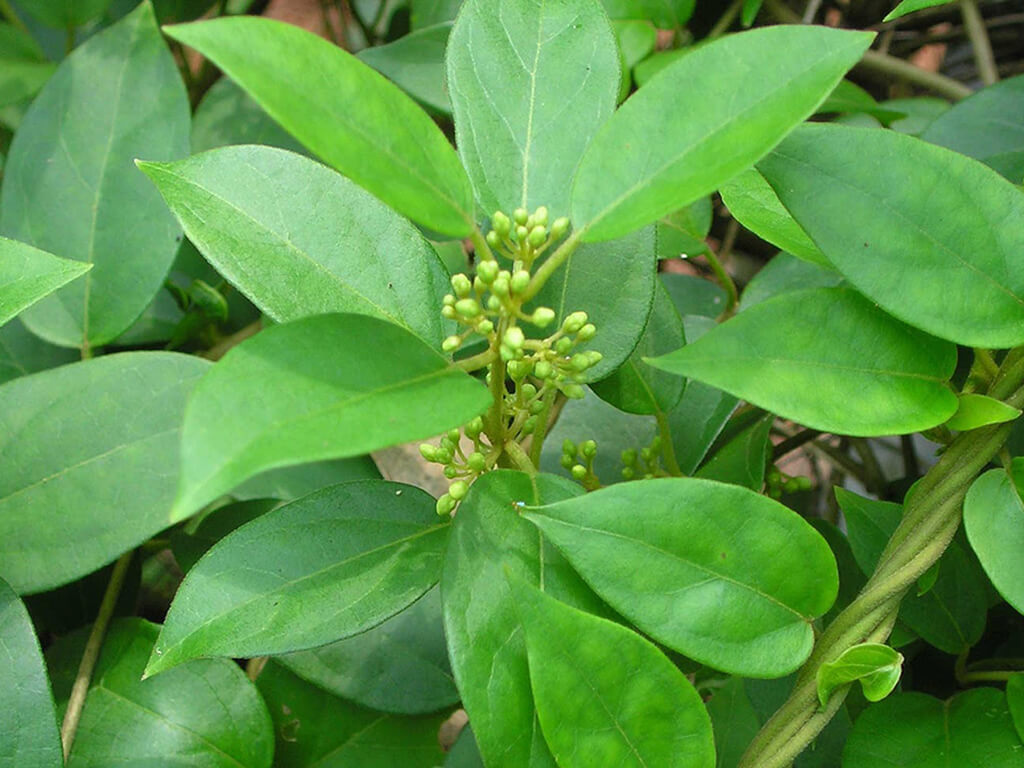Gymnema sylvestre
Apocynaceae
Throughout India (Konkan. Travankore, Goa & Guprat), in dry forests upto 600 m It is propagated by seeds and vegetatively as medicinal plant.
A large, woody, much branched cimber with pubescent young parts: oppLisite. Elliptic or ovate. more or less pubescent on both sides. base rounded or cordate. flowers small. yellow. In umbellate cymes, fruits slender, follicles upto 7 5 cm long. Flowering – fruiting August to January.

Plant contains Anti – sweet principles. gymnernic sod. quercitol. manganese, tartaric acid. Gymnema saponins 1 – V etc An aqueous extract of the leaves contained the saponins, gyminemic acid III. IV. V. VIII and IX Four additional saponins. gymnernic acid XV – ,A/111. with anti – sweet property, have been isolated from the leaves T. leaves also contain dammarane – type saponins. gymnemasides I – VII and gyperaside XXVII, XXXVIII. LV, .L11 and .L111
Whole plant. Leaves, Roots
Plant – bitter, astringent, acrid, therrnogenic, anti-inflammatory, sialagogue. anodyne. digestive, liver tonic, emetic, diuretic, stomachic, stimulant, anthelmintic. alexipharmic. laxative, cardiotontc,expectorant, antipyretic and uterine Ionic.
Fresh Leaves – when chewed have tho remarkable property of paralyzing the sense of taste for sweet and bitter substances for sometime Up to half to one hour.
Plant – is useful in inflammations, colds. promote healthy pancreas, worms. liver dosaders. headache,hepatosplenomegaly dyspepsia_ constipation. jaundice. haemorrhoids. strangury. renal and vesical calculi, helminthiasis. cardropathy, cough. asthma, bronchitis, intermittent fever, amenorrhoea. Vitiated conditions of Vata conjunctivitis and leucoderma.